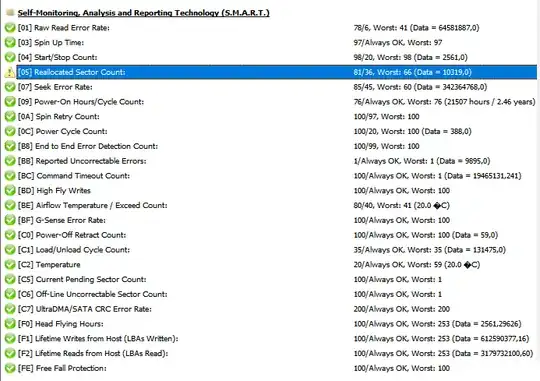I have an HDD with 10319 bad sectors(reallocated sectors), this is the SMART information of the drive; There are 3097029168 sectors, bad sectors/total sectors is 0.00000333190274945450562188570256307, I would like to keep using it until the reallocated sector count increases.

From what I gathered, the bad sectors are marked as bad and reallocated into G-List(Growing Defect List), when the operating system tries to access the sectors in G-List, the read/write requests are redirected automatically to good sectors located in a spare area inaccessible to the OS otherwise by the hard disk controller, the redirection causes delays, decreases performance.
However I know hard drives, HDD and SSD alike, are "born" with defects, because modern manufacturing technology isn't perfect, the manufacturers do a remapping before the disks are shipped, and allocated the defects into P-List(Primary Defect List), and P-List sectors do not affect performance.
I am wondering, is there a way to renumber the sectors, in such a way that the bad sectors don't have assigned addresses, so that the bad sectors are impossible to access or even be listed, effectively making the disk bad sector free, just with smaller size? Or can the G-list sectors be moved into P-list?
For example, using logical block addressing(LBA), if there are a total of 10000 sectors, the sectors with LBA's 42, 256, 365, 1024 are bad, after renumbering, sectors in LBA range 0-41 will remain unchanged, sectors in LBA range 43-255 will be sectors 42-254 (-1), sectors in LBA 257-364 will be 255-362 (-2), sectors in LBA 366-1023 will be 363-1020 (-3), sectors 1025-9999 will be 1021-9995 (-4), so that there will be 9996 continuous good sectors? There must be a way to read G-List information, is there any method to achieve this so that I will have a good disk with 3,097,018,849 continous good sectors(provided it doesn't deteriorate)?
Update: I had found this:
Once the drive layout is defined in the manufacturing process the search for defects can occur. Keep in mind that this is all occurring before the definition of the Logical Block Addressing scheme is applied. The “P” list consists of identified physical locations of “Bad” sectors on the hard disk drive. This list is then used to assist in the Logical Block Addressing of drive space for the writing of data. Here is the trick…During manufacturing, the layout of the LBA blocks occurs by shifting the LBA block sequence past the “Bad” sector. The LBA layer simply skips over the identified “Bad” location in the “P” list and continues sequentially in LBA order. The “P” list is a list of “skipped” physical locations on the hard disk drive platters.
It seems I can skip the G-List sectors by moving them into P-List, and redefine Logical Block Addresses to skip P-List, how can I do it?
Edit: I had found out I can achieve this with PC-3000, but I can't afford it, does there exist any free and open source alternatives to PC-3000?
Edit1: It seems I was right, the P-List is a skip list, they don't have LBA's, the process described above happened in factory during assigning LBA's, and I had already copied all important data that can't be downloaded online off the disk successfully without errors and then already wiped my disk clean with these:
diskpart /s %userprofile%\desktop\wipedisk.txt
format G: /fs:NTFS /a:4096 /x /p:1 /y
format G: /fs:NTFS /a:4096 /x /q /y
pause
file wipedisk.txt
select disk 1
clean all
create partition primary
format fs=ntfs
assign letter=G
quit
I am serious I want to move G-list into P-list.
Update: I had just found out the technical term for my intended operation, and confirmed low-level format can do it:https://en.wikipedia.org/wiki/Sector_slipping